Have you made any of these common skincare mistakes? We are constantly bombarded with skincare advice from television adverts, department store displays, celebrities, social media, friends and family members and the list goes on so how do you know what product is right for you when?
In this blog, I discuss four commons skincare mistakes and how you can avoid them.
Skincare mistake: Not cleaning the skin
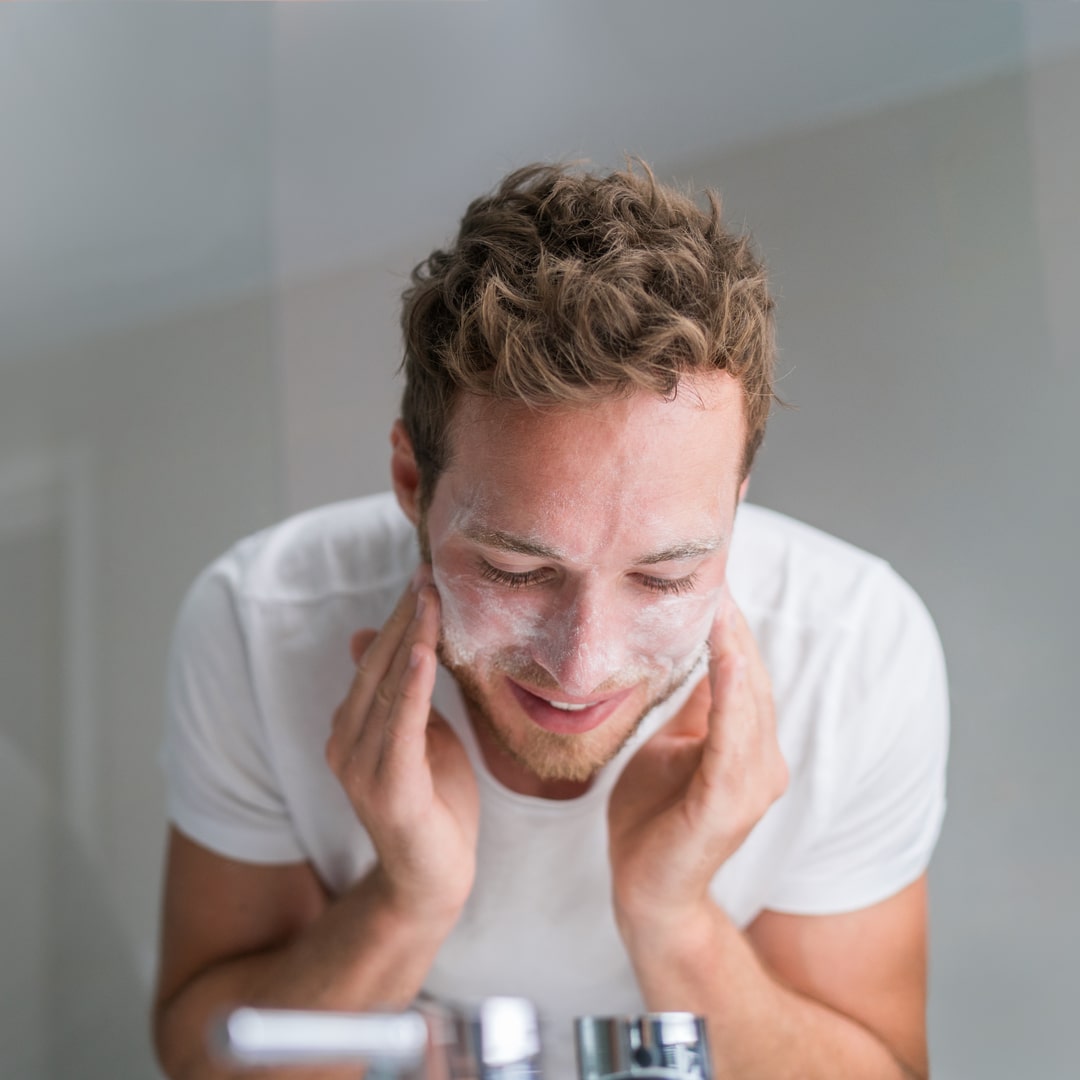
Your skin is our largest organ and has many functions day and night. One of its functions is thermoregulation which makes you sweat to cool down when you are hot. The skin is constantly shedding dead skin cells off the surface. It is the layer between your internal structures and the external environment. You have a fine balance of oils and water on the skin surface to maintain a defense system against the environment. Many products accumulate on the skin surface. This includes sweat, debris, oil, pollution particles, remnants of skincare, sunscreen, and makeup. All these products needs cleaning twice a day to keep your skin healthy. But you have to use the right cleanser so that you don’t strip the skin of its natural moisture and oil content.
If the skin is not sufficiently cleaned, you are essentially adding more products to the already dirty canvas. Conversely, if you over clean the skin you disrupt the balance forcing the skin to produce extra oil. Using the wrong cleanser or not cleansing your skin twice daily is one of the commonest skincare mistakes you should avoid.
Skincare mistake: using too many active skincare products at once
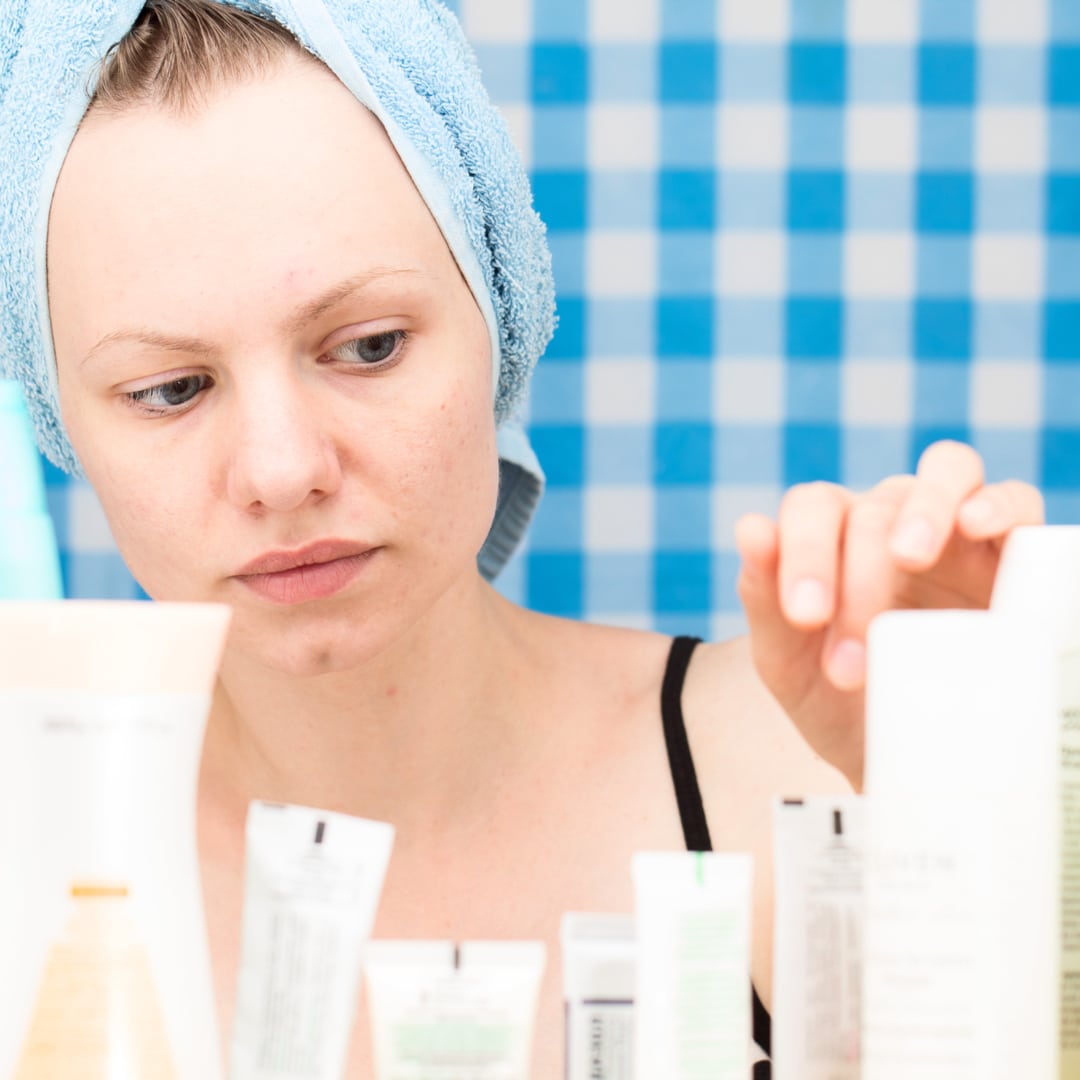
Using too many products at once is counterproductive and is a common skincare mistake.
The term ‘active’ skincare refers to skincare ingredients that are able to make a significant change to the structure and function of the skin. However, they have potent effects and maybe ‘irritants’ on the skin at first. If too many products are used without guidance it may cause your skin to become overwhelmed and react.
Occasionally the result of using too many skincare products leads to ‘sensitised’ skin. Your skin then reacts every time a new product is applied. This is because the skin barrier is impaired. Your barrier naturally has a good balance of the necessary components to function properly. The barrier function can become disrupted in 2 ways. One is introducing too many products at the same time. The other is when products are switched too frequently. Either of these can trigger the skin’s immune system. This results in inflammation, soreness, and redness.
For some skin concerns, prescription skincare is necessary. These will contain a combination of active ingredients. Prescription-only skincare must always be used under a doctor’s guidance.
To avoid these skincare mistakes, consult a skin specialist who will tailor your products according to your skin’s needs. They can monitor your progress and tell you when to add or remove a product.
Skincare mistake: Not giving skincare products enough time to work
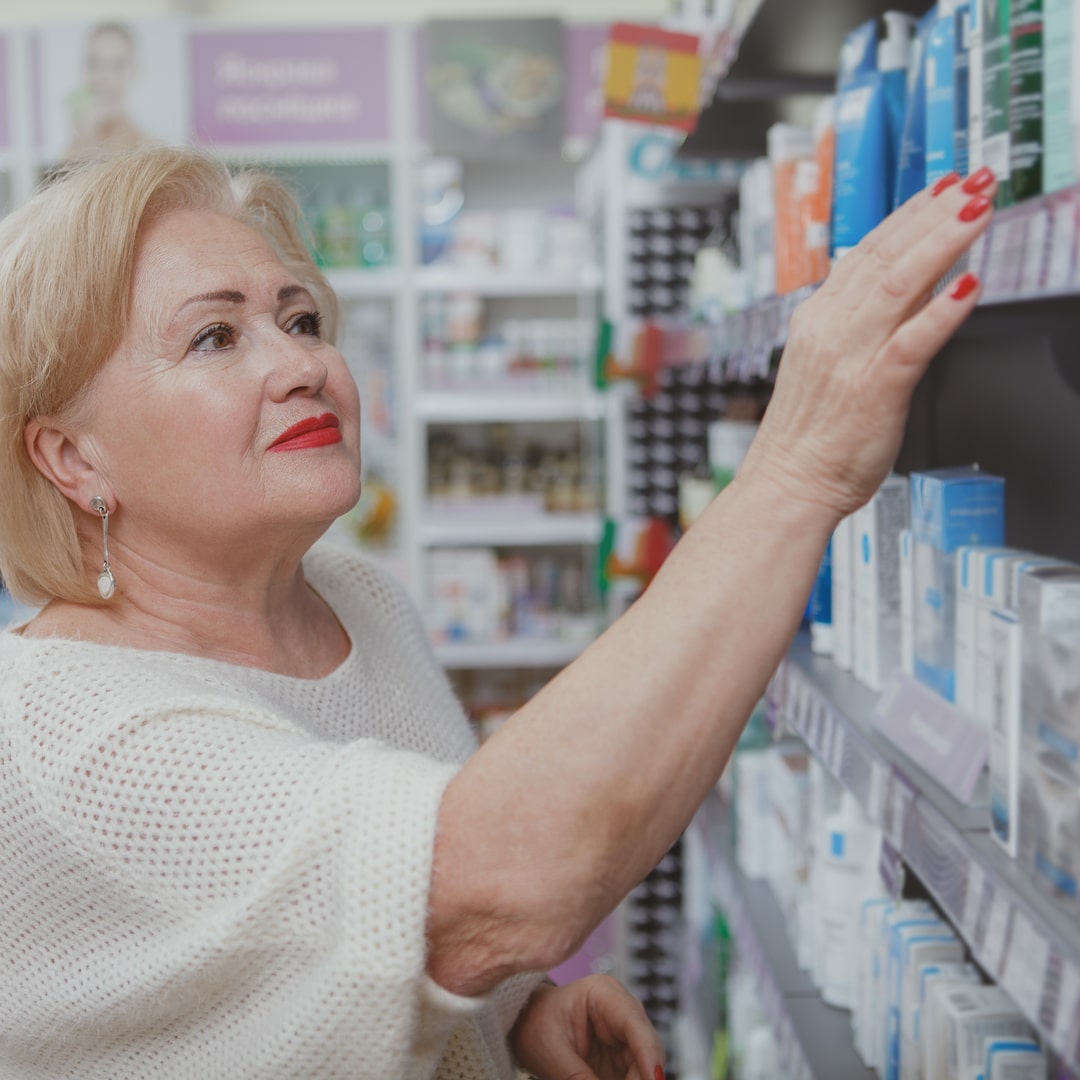
Our skin cycle is a minimum of 6 weeks. This is the time taken for a new skin cell produced in the deeper layers to reach the surface to be sloughed off. As we get older this cycle slows down and the dead cells remain longer on the surface. You get a thicker outer layer while the inner layer thins due to a lack of collagen. As a result, your skin can appear dull and wrinkly.
For a skincare product to have an effect you must give it enough time from new cells being produced to reach the surface. So, any new product must be tried for at least 6 weeks. Ideally, best results are seen after 3 months so be patient.
Click here to learn about medical skincare.
Skincare mistake: Not protecting your skin

The number one cause of skin ageing is sun damage and this is via invisible UVA radiation present throughout the day. One of the commonest skincare mistakes is not applying a suitable daily sunscreen. Left unprotected, the skin is prone to damage caused by the harmful UVA rays which can penetrate deep into the skin. Unfortunately, the damage can take several years to manifest as visible changes on the skin. This includes the early onset age spots, premature fine lines, and wrinkles leading to generally looking ‘older for your age’.
The best way to protect the skin is to get into good habits. Wear a broad-spectrum sunscreen on a daily basis to defend and protect your skin even when indoors. Remember that sunscreen is just a filter so it does not block all UV rays. So on warmer days, take additional steps. Try to avoid the midday sun, look for shade, wear a wide-brimmed hat and sunglasses.
Are you using the right sunscreen?
Sunscreens can be classed based on the chemicals that provide protection from UV radiation:
- Made up of chemical filters
- Contain only physical filters.
- Combinines chemical and physical filters.
Chemical filters absorb the UV radiation and convert it to heat. So, the filters are used up within 2 hours and need reapplication. Physical filters deflect the radiation and are slower to break down. Nevertheless, they can get rubbed off or removed by sweating.
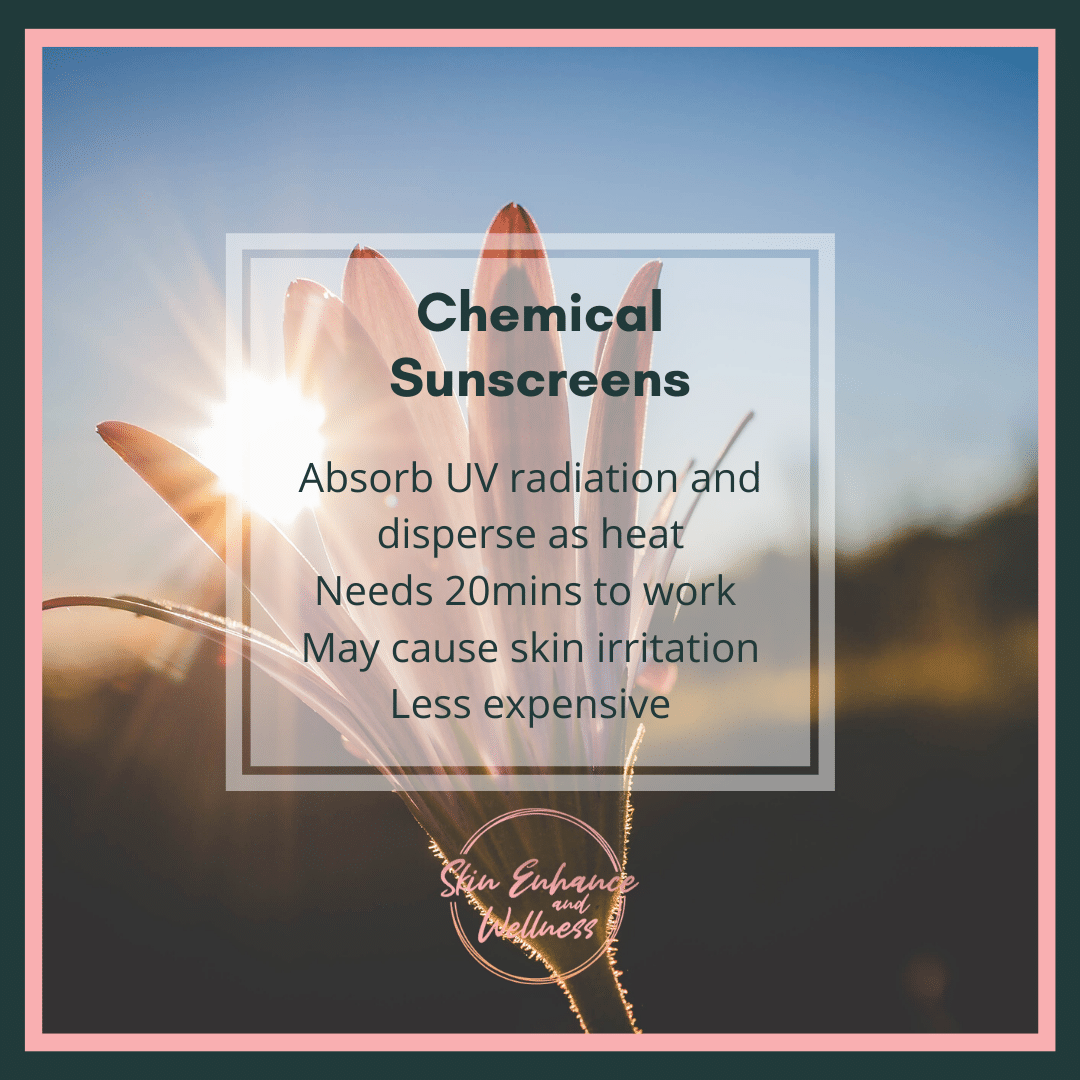
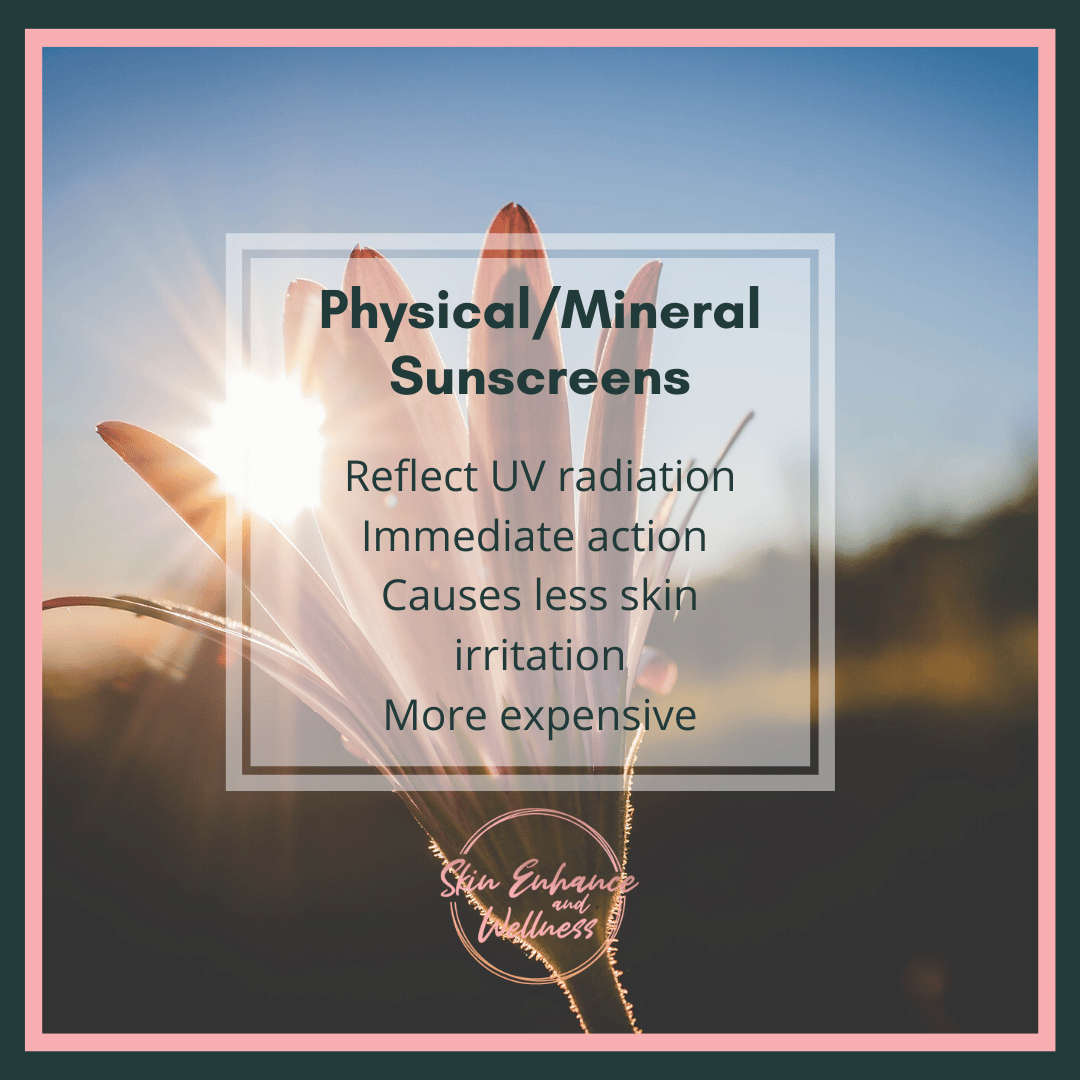
Sunscreen Labelling
The labeling on sunscreens can be confusing. The SPF (Sun Protection Factor) refers to the sunscreen’s ability to prevent UVB from damaging the skin. When you apply SPF 30 exactly as directed you get the equivalent of spending 1 minute of UVB rays for each 30minutes you spend in the sun. So, in 1 hour in the sun wearing SPF 30 is the same as spending 2 minutes totally unprotected. Put another way with SPF 30 it would take you 30 times longer to burn than if you were not wearing sunscreen.
SPF 30 allows about 3% UVB to hit your skin and an SPF 50 allows 2% and SPF 100 allows 1% UVB to hit your skin. Most experts agree that SPF 30 is sufficient as higher SPF is not providing a proportional increase in protection.
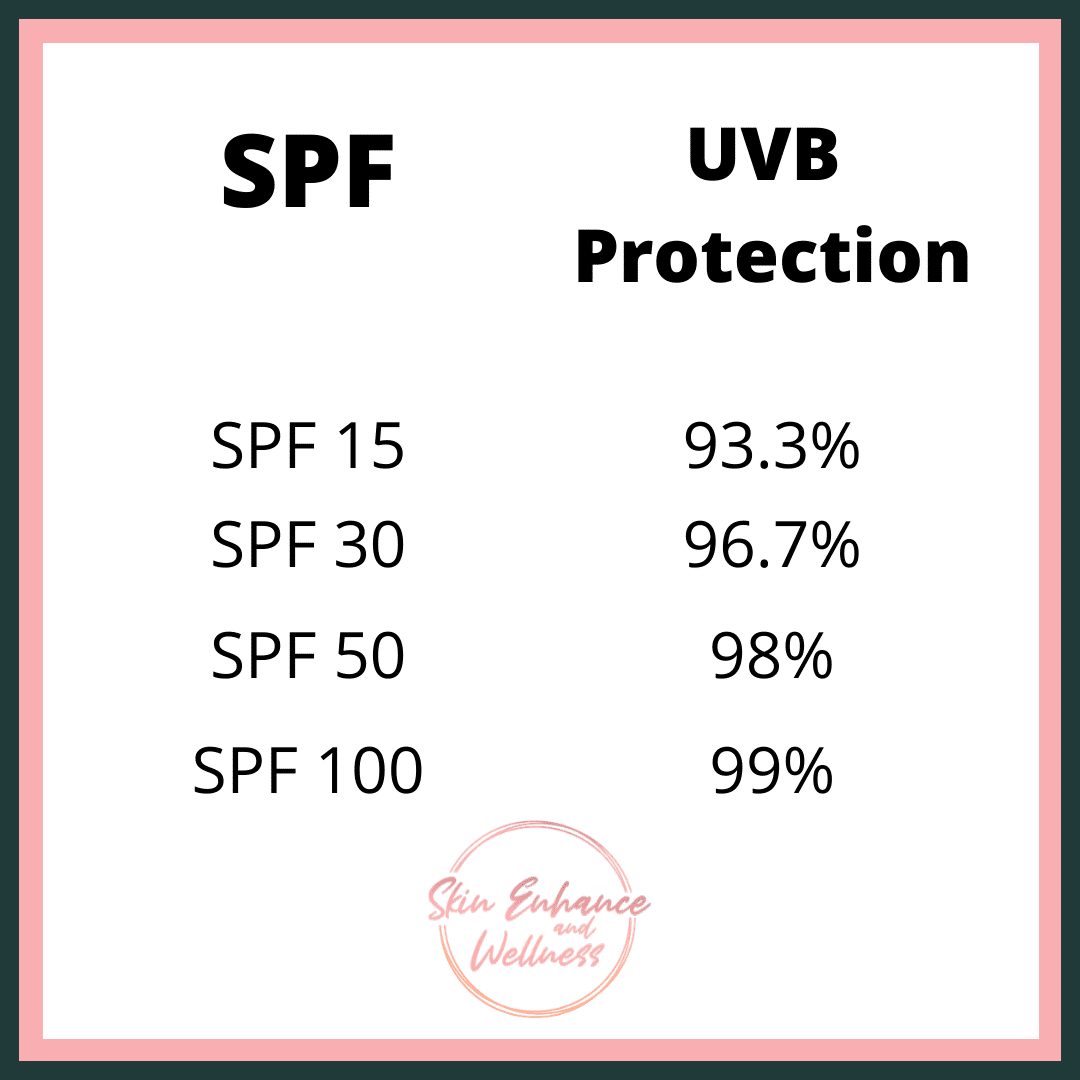
Ageing is predominantly caused by UVA radiation which penetrates the skin deeper. But SPF measures protection against UVB. Always look for ‘broad-spectrum protection’ which protects against UVA.
How much sunscreen should you be applying?
A common skincare mistake is not applying enough sunscreen. Or not reapplying it often enough to maintain the protection. It is possible to miss some areas such as the eye area, ears, exposed scalp, neck, and décolletage. According to the British Association of Dermatologists, you should be using 2mg/cm squared of skin. This equates to 1/4 teaspoon amount for the face or 1/2 teaspoon for the face and neck irrespective of your skin colour. Most of us do not apply enough.
What about sunscreen in makeup?
The sunscreen contained within makeup is insufficient to offer any protection. Moreover, we don’t usually reapply makeup to maintain that protection.
Using a good quality sunscreen daily is you taking a conscious decision to protect your skin today for healthier-looking skin in the future!
We learn from our mistakes and skincare is no different. By having bespoke consultation and skin analysis you can find the right products for you and avoid these common skincare mistakes.
For further information or to book an appointment contact me via phone, email or the website.
📱07825 999 144 or
☎️ 01277 549 006
💌 drtash@skinenhanceclinic.com
Website: Book an appointment
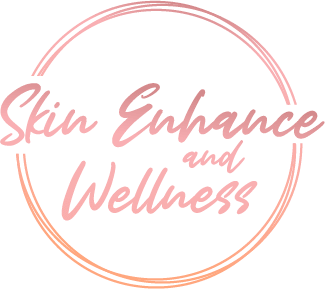

Recent Comments